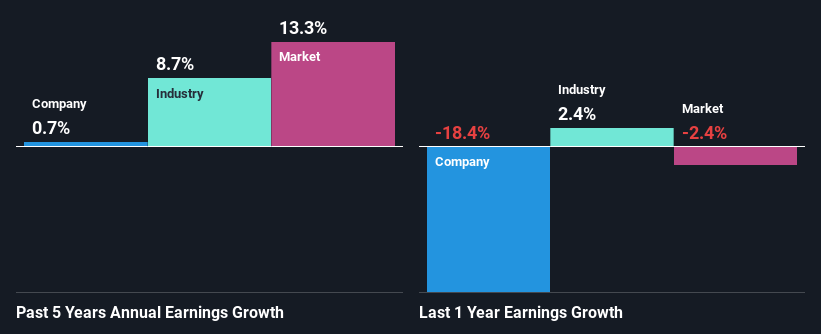Teleflex Incorporated's (NYSE:TFX) Stock Is Rallying But Financials Look Ambiguous: Will The Momentum Continue?
Most readers would already be aware that Teleflex's (NYSE:TFX) stock increased significantly by 7.4% over the past month. However, we wonder if the company's inconsistent financials would have any adverse impact on the current share price momentum. Specifically, we decided to study Teleflex's ROE in this article.
ROE or return on equity is a useful tool to assess how effectively a company can generate returns on the investment it received from its shareholders. In simpler terms, it measures the profitability of a company in relation to shareholder's equity.
See our latest analysis for Teleflex
How To Calculate Return On Equity?
Return on equity can be calculated by using the formula:
Return on Equity = Net Profit (from continuing operations) ÷ Shareholders' Equity
So, based on the above formula, the ROE for Teleflex is:
6.6% = US$296m ÷ US$4.5b (Based on the trailing twelve months to March 2024).
The 'return' is the yearly profit. Another way to think of that is that for every $1 worth of equity, the company was able to earn $0.07 in profit.
What Has ROE Got To Do With Earnings Growth?
So far, we've learned that ROE is a measure of a company's profitability. Based on how much of its profits the company chooses to reinvest or "retain", we are then able to evaluate a company's future ability to generate profits. Assuming everything else remains unchanged, the higher the ROE and profit retention, the higher the growth rate of a company compared to companies that don't necessarily bear these characteristics.
Teleflex's Earnings Growth And 6.6% ROE
On the face of it, Teleflex's ROE is not much to talk about. A quick further study shows that the company's ROE doesn't compare favorably to the industry average of 11% either. As a result, Teleflex's flat net income growth over the past five years doesn't come as a surprise given its lower ROE.
As a next step, we compared Teleflex's net income growth with the industry and were disappointed to see that the company's growth is lower than the industry average growth of 8.7% in the same period.
The basis for attaching value to a company is, to a great extent, tied to its earnings growth. The investor should try to establish if the expected growth or decline in earnings, whichever the case may be, is priced in. By doing so, they will have an idea if the stock is headed into clear blue waters or if swampy waters await. Has the market priced in the future outlook for TFX? You can find out in our latest intrinsic value infographic research report.
Is Teleflex Making Efficient Use Of Its Profits?
Teleflex's low three-year median payout ratio of 17%, (meaning the company retains83% of profits) should mean that the company is retaining most of its earnings and consequently, should see higher growth than it has reported.
In addition, Teleflex has been paying dividends over a period of at least ten years suggesting that keeping up dividend payments is way more important to the management even if it comes at the cost of business growth. Our latest analyst data shows that the future payout ratio of the company is expected to drop to 8.2% over the next three years. Accordingly, the expected drop in the payout ratio explains the expected increase in the company's ROE to 12%, over the same period.
Summary
Overall, we have mixed feelings about Teleflex. While the company does have a high rate of reinvestment, the low ROE means that all that reinvestment is not reaping any benefit to its investors, and moreover, its having a negative impact on the earnings growth. Having said that, looking at the current analyst estimates, we found that the company's earnings are expected to gain momentum. To know more about the company's future earnings growth forecasts take a look at this free report on analyst forecasts for the company to find out more.
Have feedback on this article? Concerned about the content? Get in touch with us directly. Alternatively, email editorial-team (at) simplywallst.com.
This article by Simply Wall St is general in nature. We provide commentary based on historical data and analyst forecasts only using an unbiased methodology and our articles are not intended to be financial advice. It does not constitute a recommendation to buy or sell any stock, and does not take account of your objectives, or your financial situation. We aim to bring you long-term focused analysis driven by fundamental data. Note that our analysis may not factor in the latest price-sensitive company announcements or qualitative material. Simply Wall St has no position in any stocks mentioned.

 Yahoo Finance
Yahoo Finance 
